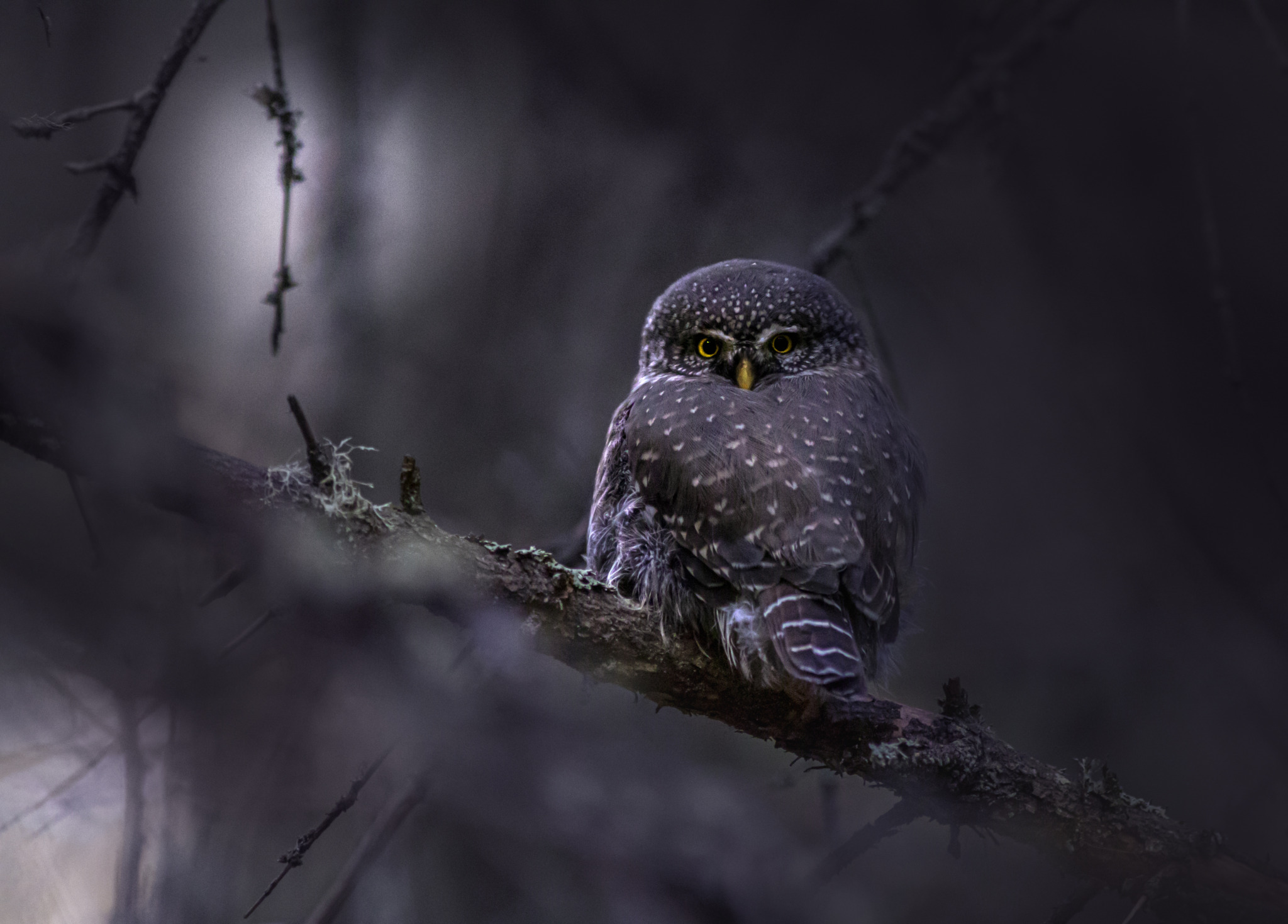Eurasian Pygmy Owl (Glaucidium passerinum)
The Eurasian Pygmy Owl is the smallest owl species in Europe and one of the most fascinating due to its diminutive size and fierce hunting capabilities. Despite its small stature, this owl is a highly skilled predator, often taking prey larger than itself. It is primarily a forest-dwelling species found in boreal and mountainous regions.
Physical Description
- Size:
- Length: 15–19 cm (6–7.5 inches).
- Wingspan: 32–39 cm (12.5–15.5 inches).
- Weight: 50–70 grams (1.8–2.5 ounces).
- Plumage:
- Brown upperparts with white spotting.
- Pale, streaked underparts.
- Eyes:
- Yellow, giving it a sharp and intense gaze.
- Tail:
- Relatively short and marked with dark bands.
- Facial Disc:
- Less pronounced than in larger owls, giving it a less “rounded” facial appearance.
Habitat
- Found across northern and central Europe, as well as parts of Asia.
- Preferred Habitat:
- Boreal forests dominated by conifers, such as spruce, pine, and fir.
- Also found in mixed and deciduous forests in mountainous areas.
- Typically resides at elevations ranging from lowlands to 2,000 meters (6,560 feet), depending on the region.
Behavior
- Activity:
- Primarily crepuscular, active during dawn and dusk, though it may also hunt during the day.
- Vocalizations:
- Produces a high-pitched, whistling “poo-poo-poo” call, often heard during mating season.
- Territorial:
- Highly territorial; males defend nesting areas vigorously.
Diet
- A carnivorous predator, with a diet consisting of:
- Small Mammals: Voles, mice, and shrews are staples.
- Birds: Small songbirds such as tits and finches, particularly in winter.
- Insects: Occasionally feeds on large insects.
- Hunting Strategy:
- Hunts from perches, scanning for movement before swooping down.
- Stores surplus prey in tree cavities or crevices for later consumption, especially in colder months.
Reproduction
- Breeding Season:
- Begins in late winter to early spring (March to May).
- Nesting:
- Does not build its own nest; instead, it uses old woodpecker holes or natural tree cavities.
- Prefers coniferous trees for nesting.
- Clutch Size:
- Lays 3–7 white eggs.
- Incubation:
- 28–29 days, primarily by the female.
- Fledging:
- Chicks leave the nest after about 4–5 weeks but remain dependent on the parents for several more weeks.
Predators and Threats
- Natural Predators:
- Larger birds of prey, such as hawks and larger owls.
- Human Impact:
- Habitat destruction and logging are significant threats.
- Sensitive to changes in forest structure, particularly the removal of old trees and deadwood.
- Conservation Status:
- Listed as Least Concern by the IUCN, but its populations are locally vulnerable due to habitat loss.
Unique Traits
- Small but Fierce:
- Known to attack prey larger than itself, showcasing its aggressive hunting nature.
- Cold Adaptation:
- Stores food to survive harsh winters when prey is scarce.
- Silent Flight:
- Like other owls, it has specialized feathers for silent flight, allowing it to ambush prey undetected.
Interesting Facts
- The Eurasian Pygmy Owl can capture and cache up to ten times its body weight in prey, storing it in hidden locations.
- It often perches at the top of trees to scan for prey, giving it a commanding view despite its small size.
- Male pygmy owls have been known to sing persistently to attract females during the breeding season, sometimes for hours.
Summary
The Eurasian Pygmy Owl (Glaucidium passerinum) may be small, but it is an efficient and determined predator perfectly adapted to life in northern forests. Its fierce hunting tactics, resourcefulness, and ability to thrive in cold climates make it a remarkable species in the avian world. Conservation of mature forests is vital to ensuring the continued survival of this captivating owl.
Views: 978
Subscribe to the newsletter:
